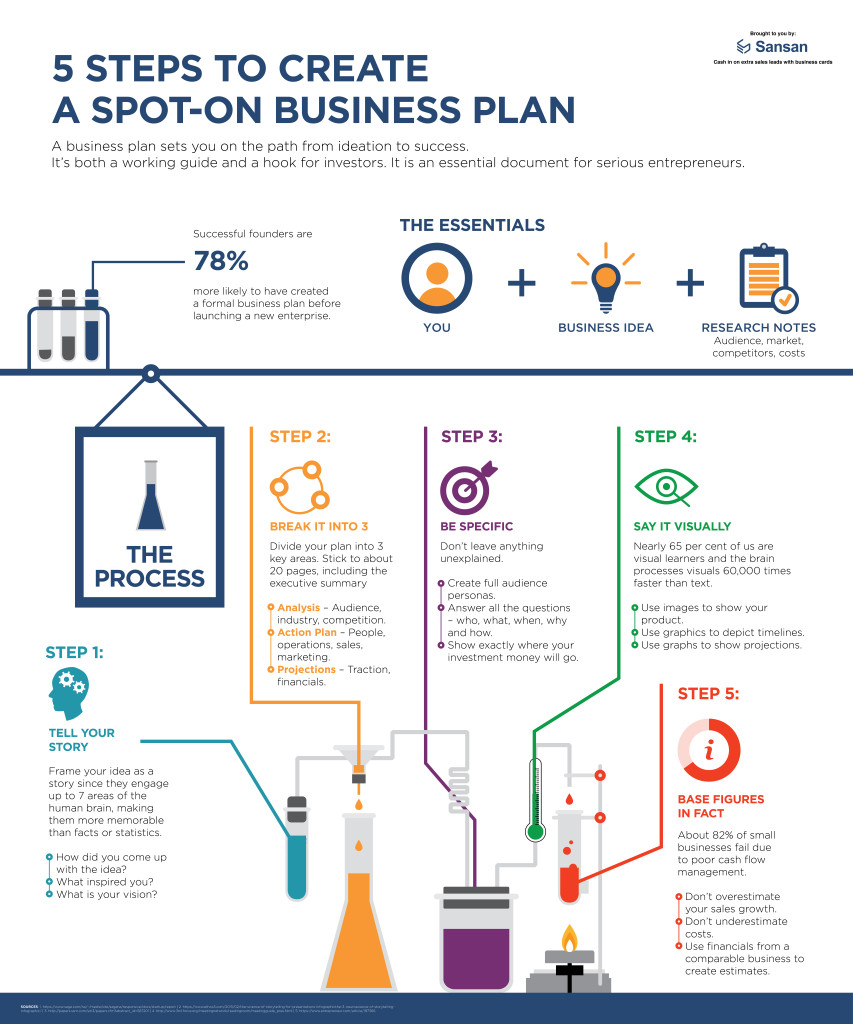Five steps to creating a successful business plan – StartupSmart

By Simon Milne
When you own your own business it is easy to get caught up working in the business and never take time out to work on the business.
Working in the business drives your cash flow today. Working on the business, which includes writing an annual business plan, drives your cash flow tomorrow.
It can be challenging to develop a business plan. Can you afford to take the time out? How will it help your business today?
In my experience, successful leaders move towards a challenge. They want to plan for the future of their businesses. They want to think about the environment, the competition, and the quality of the team. Envisaging the future fires them up.
So how do you go about developing your business plan?
The first thing to do is to pull together as much data as possible. This includes financial data, information on your existing customers and marketing insights, as well as information on your competitors and industry. Information can be a challenge in a small business and it is important that you prioritise it.
The next thing is to decide who is going to develop the plan with you. It is best to work with a small group of people that includes your management team and perhaps an advisor or coach. Set aside a full day (or two depending on the size of your business) away from the workplace so there are no distractions and you are not pulled back into your business.
I use the following business planning process with leaders and their teams:
1. Examine the data in front of you
Start with the financial data. What does it tell you about the underlying business and profitability? Discuss all the information you have on your products, services, customers and the market. Where are your most profitable customers? What are your most profitable activities? Why do people buy from you? What makes you more distinctive than your competitor?
Develop a very clear picture of your environment and competitive landscape. Then, working as a team, ask yourself these questions:
2. What is your goal over the next 3-5 years?
What does your destination look like? Describe your customers, your competitive edge, your business structure and processes. How much larger will you be? How much more profitable will you be? Will your market share increase?
Write down your revenue and profit goals (and market share goals if relevant). You now have a number to aim for.
3. What will fuel your revenue growth and profitability?
How you are going to reach your numbers? Do you need to introduce new products or services? Do you need to change your structure, people or processes? Will your most profitable customers today still be your most profitable customers tomorrow?
4. What roadblocks are in your way today?
Now look at your business today. Is your brand correctly positioned? Do you have the right culture in place and the people in the right roles? Is your work/life balance in place for the journey ahead? Are you, as the owner of the business, focused on the right things?
What changes do you need to make – both personally and professionally – to reach your destination?
5. Prepare your itinerary
The final stage of the process is to prepare the plan. Create an action point for every change that needs to be made today. Assign it to yourself or a team member with a clear deliverable and date. This forms the basis of your annual business plan.
You are now done.
The planning process should have been both challenging and rewarding. It will help you focus on what is important (as opposed to what is urgent), create new customers and put in place the building blocks for long-term success. It will also challenge you at look at the changes you personally need to make to grow your business.
Your business plan – done once a year with quarterly reviews – will help you create your future and meet the personal and professional challenges ahead.
Simon Milne is a business coach with TeamsPlus. He can be contacted at [email protected]
This piece was originally published on SmartCompany.
Follow StartupSmart on Facebook, Twitter, LinkedIn and SoundCloud.

